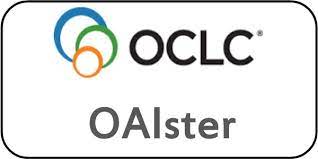Correlation Between Nasal Mucociliary Clearance and Peak Expiratory Flow Rate During Various Phases of Menstrual Cycle
Keywords:
Menstrual cycle, menstrual phase, proliferative phase, luteal phase, NMC, PEFRAbstract
Nasal mucociliary clearance (NMC) time and peak expiratory flow rate (PEFR) were tested in 30 Indian healthy female
volunteer medical students, 18-24 years of age, having regular menstrual cycles. NMC time was assessed by Andersen’s
saccharin technique. The mean values of NMC of two menstrual cycles were 10.81 ± 2.143, 8.233 ± 1.942 and 11.12 ± 2.118 in
menstrual, proliferative and luteal phase, respectively. On comparing proliferative phase with menstrual and luteal phases,
NMC time difference was highly significant (p < 0.001) and when luteal and menstrual phases were compared, results were
not significant (p > 0.05). NMC time was significantly less in proliferative phase when compared with other two phases of
menstrual cycles. Thus, various phases of menstrual cycle do have effect on nasal mucosa. This may be related to change
in hormonal levels in different phases of menstrual cycle. PEFR and NMC time were measured during menstrual (2nd-4th
day), proliferative (9th-12th day) and luteal phase (19th-21st day) of menstrual cycles. PEFR was measured by Wright’s peak
flow meter in standing position during various phases of two menstrual cycles. The mean of PEFR of two menstrual cycles
was considered. On comparison of luteal and menstrual phases, the PEFR difference was found highly significant (p < 0.001).
Similarly on comparing proliferative and luteal phases, the PEFR difference was found highly significant (p < 0.001). But on
comparing menstrual and proliferative phases, the PEFR difference was not found significant (p > 0.05). When NMC and PEFR
were correlated by Pearson’s equation in all the three phases of menstrual cycle 1, then the correlation coefficient was found
not significant in menstrual (r = 0.330, p > 0.05), proliferative (r = 0.2499, p > 0.05) and in luteal phase (r = 0.3433, p > 0.05),
which showed that any increase or decrease in one parameter (NMC) is not significantly affecting other parameter (PEFR)
in any phase of menstrual cycle. Similar results were found in menstrual cycle 2 and even when mean of both cycles was
considered. The correlation coefficient of cycle 2 was r = 0.3361, p > 0.05 in menstrual, r = 0.3375, p > 0.05 in proliferative and
r = 0.3514, p > 0.05 in luteal phase, which was not significant. The correlation coefficient of NMC and PEFR of both cycles
was r = 0.343, p > 0.05 in menstrual, r = 0.2903, p > 0.05 in proliferative and r = 0.3570, p > 0.05 in luteal phase, which was
also not significant.
Downloads
Published
Issue
Section
License
All open access articles published in IJCP are distributed under the terms of the CC BY-NC 4.0 license (Creative Commons Attribution-Non-Commercial 4.0 International Public License). This license permits unrestricted use, distribution, and reproduction of the articles in any medium for non-commercial purposes, provided that: The original authorship is properly and fully attributed. The IJCP is cited as the original place of publication with correct citation details. If an original work is reproduced or disseminated in part or as a derivative work, this must be clearly indicated. No articles are reproduced for commercial use without prior consent from the IJCP. All licensing requests and permissions for commercial use will be managed by the Publisher.










